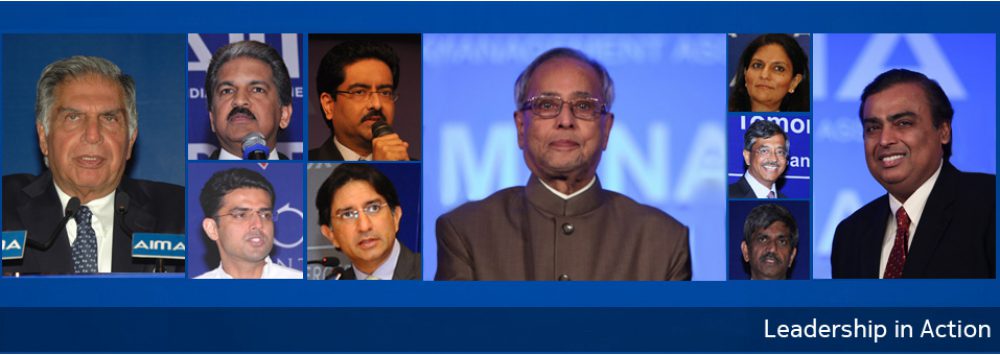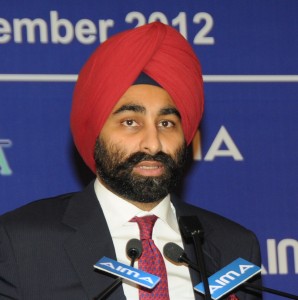I want to share my thoughts for a business that is not traditionally organised, not just in India but in most countries of Asia. Healthcare is not a business that is seen as an industry or something that people are excited about. Many people tell me that we make money when people fall sick and we make joy out of other people’s distress and sickness. Unlike many other business which are consumer facing like FMCG business & hotels where customers chose the products and services they like, but in 99.9% of cases, people come to us when they have no choice left. They don’t want to come to us; they don’t want to be in situation where they have to consult a doctor or visit a hospital.
Unfortunately the biggest challenge for us is that the minimum expectation from the people who visit us is our best outcome. The expectations from a customer who is coming in to the hospital is that he leaves well or perfect. Therefore we battle with the minimum expectation of our customer to be our best outcome always. So our challenge is that with this context how you will make a patient happy when he leaves the hospital after recovering from his illness. So, we want people to say that if I fall sick I would come to Fortis rather than going anywhere else.
When we started off the healthcare business in late nineties, we wanted to understand how can we do things differently? The gap in health care quality that is available in India versus what is available internationally, keeping in mind the consumer’s expectations is very vast. If you start looking at the structural issues of healthcare industry, we have about 50000 private hospitals in India today. That is about 2 million beds in private sector. As a country we have only 30% infrastructure in the private sector while 70% belong to government hospitals. But 80% of consumer base in hospital industry goes to the hospital in private sector, so it is a skewed structure.
There are couple of challenges here. First of all it is very entrepreneurial, it does not have scale size, it does not have complexity and it does not have management structure and processes. In India, most hospitals are designed for Doctors rather than the patients. When you call up a doctor to fix a time for consultation, he will give the same appointment time for at least 5 patients and patients wait for him and that’s how his brand starts building. We want you to get in and out as soon as you recover from the illness. When we serve the patient at the appointed time we are increasing efficiency and we make sure that a patient is treated well and leaves our hospital fit and fine.
We have changed a lot of typical mind sets over the last 15 years, starting off from design. In healthcare what is the most important thing is that we provide the patient with the best facility at the right time in terms of critical care and look at designing the facility and structure of the hospital that is most efficient and suitable for a doctor and patient. For this we interacted with the customers to understand what kind of challenges they face when they visit a hospital. So the question is how do you change the paradigm and how do you attract the people who had set up those paradigms.
In our business we tell you what the problem is, we confirm it through a diagnosis and then we tell you the solution and then we tell you how much you have to pay for it. We made a salary model, where we employed doctor on a full time scale irrespective of how much business we do and how many patients doctors see in our hospitals and we subsequently set up 5 point metric model to compensate and give them bonuses.
So we came out with a formula of what you do and not how much you do. The basic principle we followed is that what can be the best services that we can offer to our customers. So we have got some specialities that we focus on in relation to our customers. Our main focus is that people don’t just get cured but they get healed in our hospitals. Our hospital environment distracts you from the sickness. We have created theatres in our hospitals where patients can go and watch a movie when they have time. We have a retail arcade where they can go and check out stuff, we call it retail therapy. We have a spa, gym and pool. We have food outlets as we know nothing heals better than good food and it is the best stress buster. These services make a relaxed environment for everyone at the hospital making our hospitals a healing care centre.
At the end of the day we deliver and create what we think. According to me we should not assume the past practices as the best practices. Just because a model is followed and renowned in the past, it does not make it the best model to follow, we should keep innovating keeping in mind the present situations and that is the first step to start the journey of Innovation.
The above article is an excerpt from the speech delivered by Mr. Shivinder Singh, Executive Vice Chairman, Fortis Healthcare at AIMA’s 39th National Management Convention which was held in September 2012.





Innovation is one of the main drivers in healthcare industries. It is quintessential for these sectors.
The health care sector has many stakeholders, each with an agenda. Often, these players have substantial resources and the power to influence public policy and opinion by attacking or helping the innovator.
The health care industry depends on the care of health-related services by professionals for the benefit of patients.
Must break down the problem, looking at the different types of innovation and the forces that affect them, for good or ill.
The Innovation Management module helps solution seekers publish their needs, collect and validate ideas from problem solvers, and enrich and mature the best ideas into smartly screened proposals
awesome… 🙂
I liked this article, healthcare is a different industry altogether and it should be handled differently.